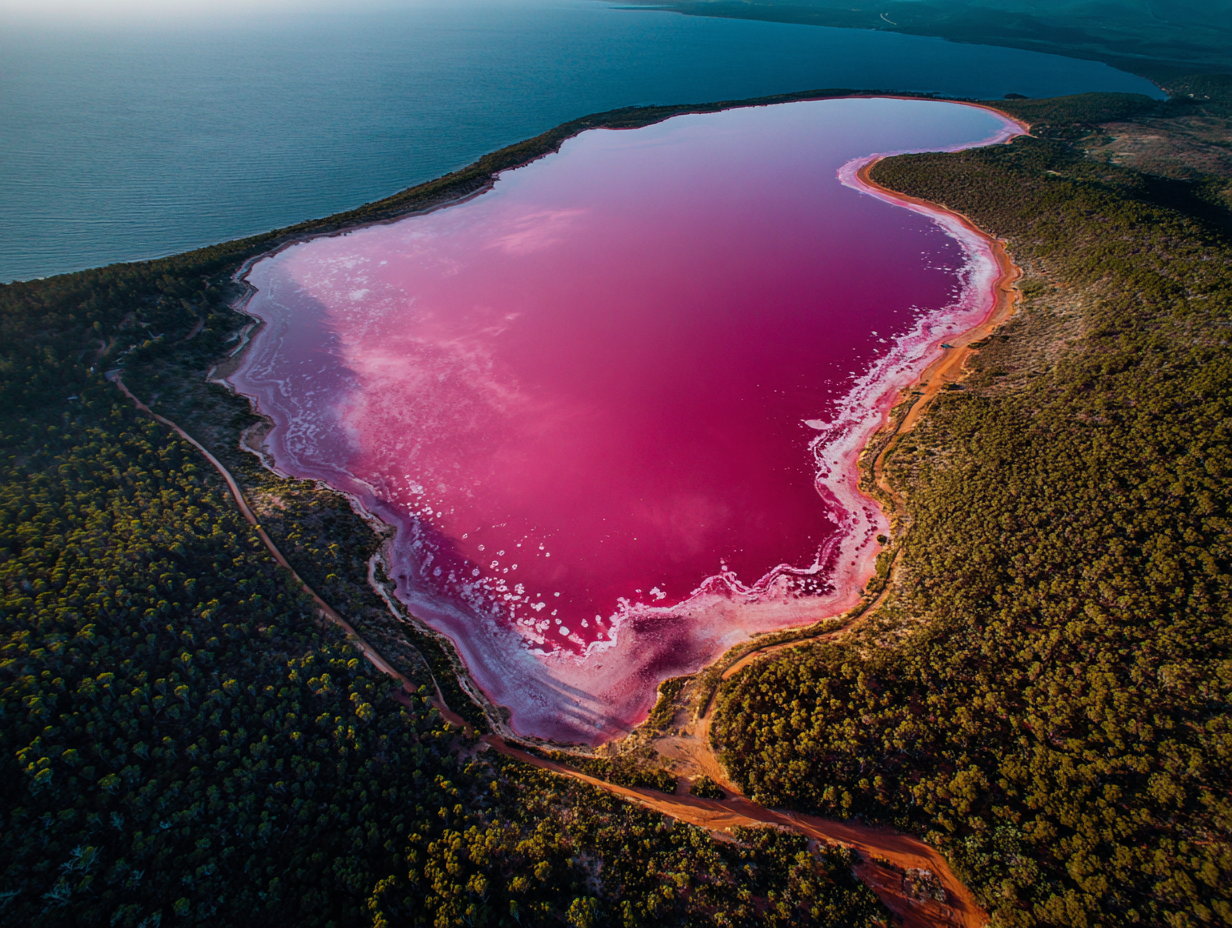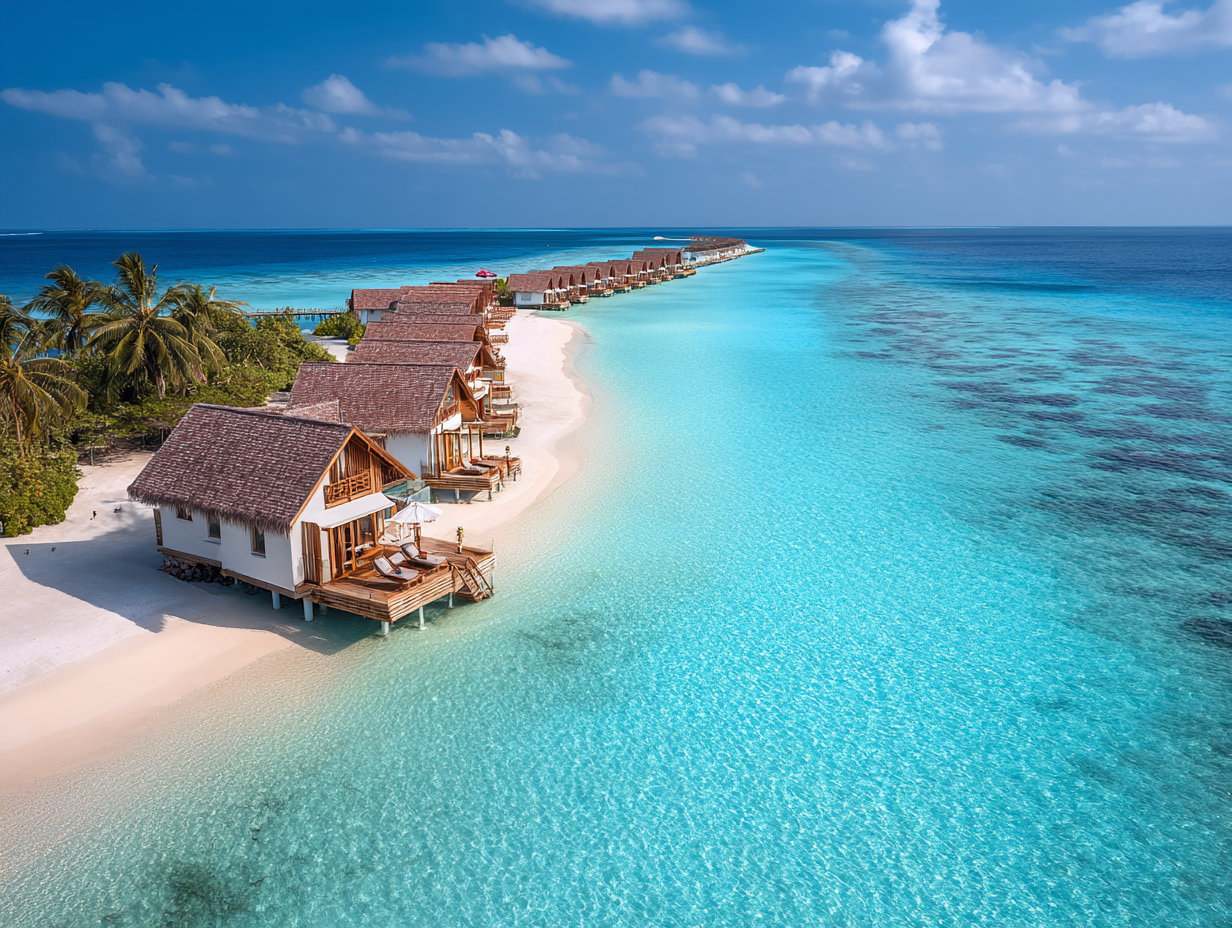Some lakes around the world are known for their magical ability to change colour with the seasons. These natural wonders attract tourists, scientists, and photographers who want to witness their shifting shades.
Nature has many surprises, and colour-changing lakes are among the most fascinating. These lakes transform from blue to green, pink, red, or even white depending on the season, weather, temperature, algae growth, and mineral content. Some of them shift shades throughout the year, while others change colour within weeks or even days.
Scientists study these transformations to understand local ecosystems, while travellers visit these places to enjoy rare, picture-perfect landscapes.
Here is a detailed look at seven lakes around the world that are famous for their dramatic seasonal colour changes.
1. Lake Hillier, Australia
Lake Hillier is famous for its bright pink water, which remains colourful throughout the year but becomes even more vibrant during hot seasons. The colour comes from a type of algae and salt-loving bacteria. As temperatures rise, these organisms produce more pigments, resulting in a more intense pink shade.
2. Laguna Colorada, Bolivia
Located in the high-altitude region of Bolivia, Laguna Colorada is known for its red colour caused by algae and minerals. But the shade is not constant. During different times of the year, the lake shifts between deep red, brick orange, and rusty brown. The colour changes depend on the intensity of sunlight and water temperature.
3. Kelimutu Crater Lakes, Indonesia
Kelimutu is one of the world’s most mysterious sites because it has three crater lakes, each with a different colour. These colours change regularly from blue to green, black, brown, or deep red due to the volcanic gases rising from below the surface. The lakes constantly react to mineral and chemical changes, creating unpredictable colour shifts.
4. Hutt Lagoon, Australia
Hutt Lagoon is another Australian lake known for its pink shade. The lake appears bright pink during hot summer days when algae grow rapidly. In cooler months, the colour softens into light purple or lilac. Sunlight, clouds, and water levels also play a major role in how the lake looks on any given day.
5. Lake Natron, Tanzania
Lake Natron is a salt lake that often turns red or orange because of its high salt content and algae. During the dry season, the water becomes shallower, and the colours intensify. In the rainy season, the lake becomes paler or even white due to diluted minerals. It is also known as a breeding ground for flamingos, adding even more colour to the landscape.
6. Spotted Lake, Canada
Spotted Lake in British Columbia changes colour due to high mineral deposits. In spring, the lake looks blue-green, but as water evaporates in summer, mineral-rich spots appear in shades of yellow, white, and light green. This creates a unique polka-dot pattern that draws visitors every year.
7. Retba Lake, Senegal
Lake Retba is known for its pink water, similar to Lake Hillier. The colour is strongest during the dry season when the water becomes saltier. In the rainy season, fresh water flows into the lake, reducing salinity and turning the water into a lighter, almost clear shade. The presence of algae is the main reason behind the colour variations.
These lakes prove that nature is constantly changing and full of surprises. Their colours shift with the seasons, offering unforgettable views and valuable scientific insights.
Whether you admire them from photographs or plan to visit one, these colour-changing lakes are reminders of the beauty and mystery hidden in our natural world.



